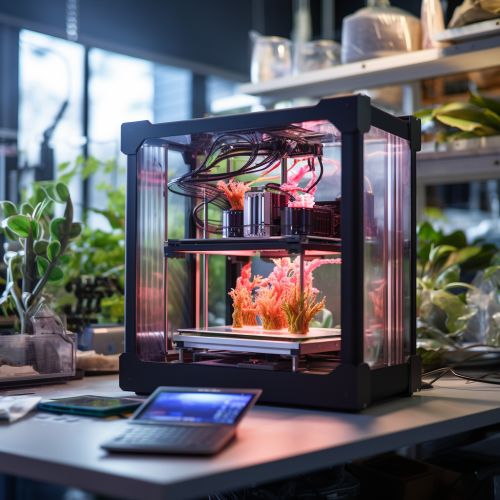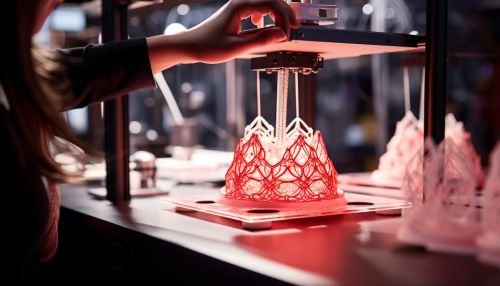Bioprinting
Introduction
Bioprinting is a branch of biotechnology that involves the production of complex living tissues using 3D printing technologies. This field has the potential to revolutionize medicine and healthcare, offering solutions for organ transplantation, drug testing, and disease modeling. Bioprinting works by layering cells, biocompatible materials, and supporting components to create functional living tissues.


History and Development
The concept of bioprinting emerged in the early 2000s, following advancements in 3D printing technology. The first patent related to bioprinting was filed in 2003 by Thomas Boland, who developed a method for printing cells using a modified inkjet printer. Since then, the field has grown rapidly, with numerous research institutions and companies around the world contributing to its development.
Bioprinting Process
The bioprinting process involves three key steps: pre-bioprinting, bioprinting, and post-bioprinting.
Pre-Bioprinting
The pre-bioprinting stage involves the creation of a digital model, or blueprint, of the tissue or organ to be printed. This is typically achieved using medical imaging techniques such as MRI or CT scans. The digital model is then converted into a format that the bioprinter can interpret.
Bioprinting
The actual bioprinting process involves the layer-by-layer deposition of bioinks – materials that contain living cells – to create the desired tissue structure. There are several bioprinting techniques, including inkjet bioprinting, laser-assisted bioprinting, and extrusion bioprinting. The choice of technique depends on the type of tissue being printed and the specific requirements of the application.
Post-Bioprinting
The post-bioprinting stage involves the maturation of the printed tissue. This is achieved through a process known as tissue culture, where the printed tissue is placed in a controlled environment that promotes cell growth and differentiation.
Applications
Bioprinting has a wide range of potential applications in both medical and non-medical fields.
Medical Applications
In medicine, bioprinting could be used to create personalized organs for transplantation, reducing the need for organ donors and the risk of organ rejection. It could also be used to create realistic models of human tissues and organs for drug testing and disease modeling, reducing the need for animal testing.
Non-Medical Applications
In non-medical fields, bioprinting could be used in areas such as food production, where it could be used to create lab-grown meat, and in cosmetics testing, where it could be used to create human skin models for testing cosmetic products.
Challenges and Future Directions
Despite its potential, bioprinting faces several challenges. These include technical challenges related to the printing process, such as the need for high-resolution printing and the development of suitable bioinks, as well as regulatory and ethical challenges. However, ongoing research and development in the field are expected to overcome these challenges in the future.
